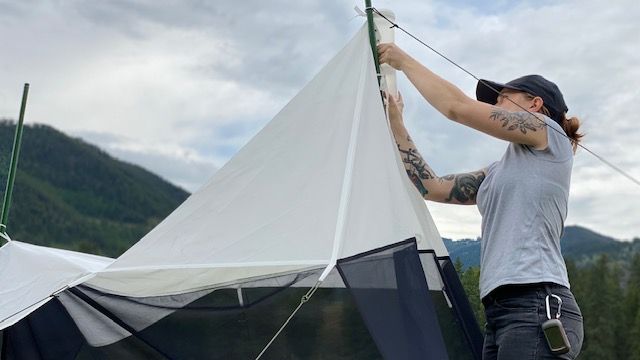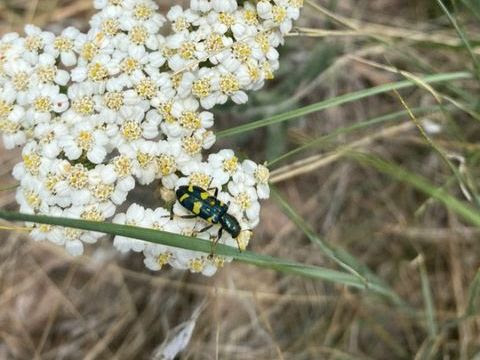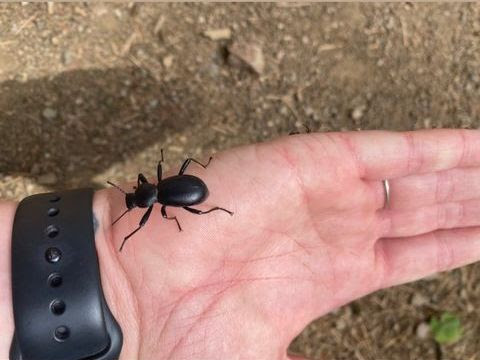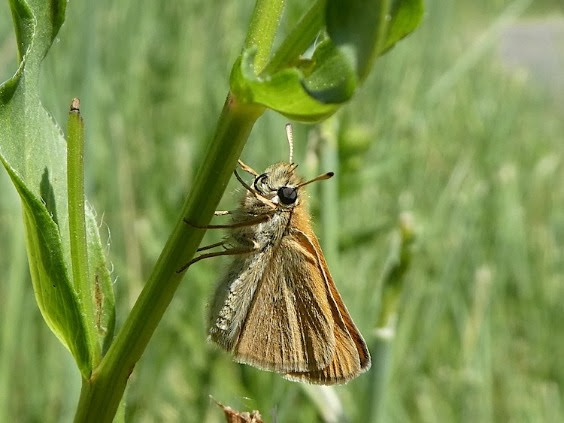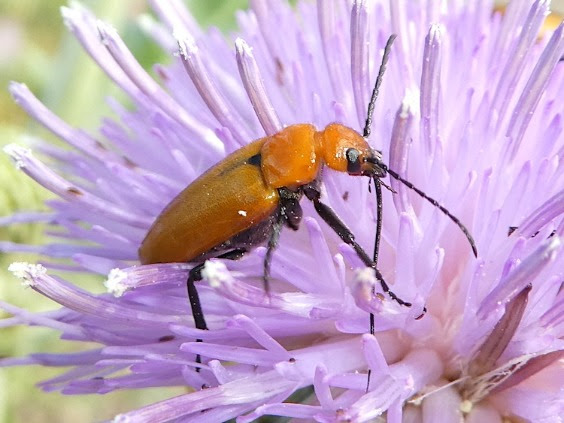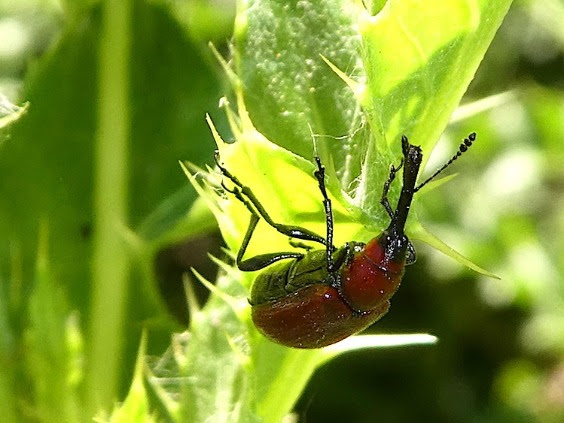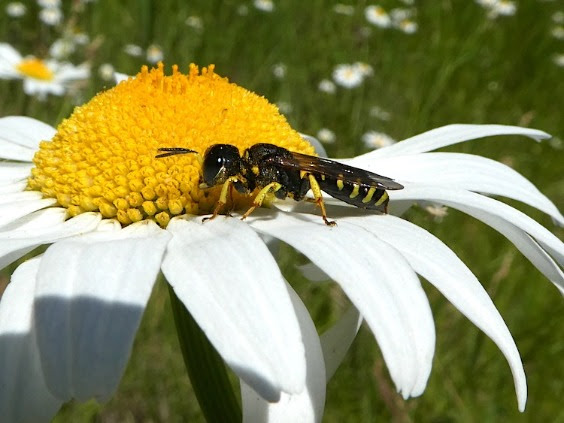Unlike the common wood-nymph (Cercyonis pegala), who has two eyespots on the forewing about the same size (or lower eyespot might be slightly larger), the small’s lower eyespot is smaller than the upper one […]
Read MoreArticles by: Butterfly House
Notes from the Field: Malaise Trap Survey (Year 2!)
Welcome back to the Field! Summer may be kicking into high gear, but our malaise trap survey is winding down for the season. To give you a refresher on what […]
Read MoreOrnate Checkered Beetle (Trichodes ornatus)
These boldly patterned beetles are common on yarrow (pictured here) and other flowers in western North America (Alaska-California to Northwest Territories-Saskatchewan-Texas). Adults feed primarily on pollen and occasionally on small insects, while […]
Read MoreCalifornia Broad-necked Darkling Beetle (Coelocnemis dilaticollis)
We are not 100% sure but we believe this is the California Broad-necked Darkling Beetle (Coelocnemis dilaticollis). It’s easy to see where this large, flightless beetle got its name. Broad-necks […]
Read MoreAmerican Angle Shades Moth (Euplexia benesimilis)
This subdued beauty is on the wing from mid-May to mid-July in moist forest habitats. Their wings can do a unique trick (along with other species in the tribe Phlogophorini). The […]
Read MoreEuropean Skipper (Thymelicus lineola)
This skipper was accidentally introduced to North America in 1910 in Ontario, Canada. They have since become well established in the east and have more recently become established in the […]
Read MoreBee Assassin (Apiomerus spissipes)
As a type of true bug (with piercing mouth parts), bee assassins stick their proboscis into their victim’s body and begin to feed. To improve their chances at catching a […]
Read MoreA Blister Beetle (Nemognatha sp.)
Blister beetles in this genus can be found worldwide. In the US, they are more diverse in the west. There are two very different things about these blister beetles — […]
Read MoreRose Curculio (Merhynchites bicolor)
This beautiful species of weevil can be found in the western half of the United States and southwestern Canada. They overwinter in the adult stage and females will lay their […]
Read MoreA Square-headed Wasp (genus Ectemnius)
Square-headed wasps (subfamily Crabroninae), as you can probably guess, are named for their large and square heads. They are active, solitary wasps that mostly hunt adult flies to stock their […]
Read More
